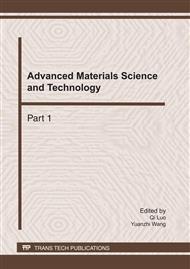p.355
p.361
p.366
p.372
p.377
p.383
p.389
p.395
p.401
Design and Analysis of Hydraulic Full-Bridge Network for Water Hydraulic Servo Valve
Abstract:
Annular gap throttle has been used in water hydraulic slide valve which makes the hydraulic full-bridge network of the water hydraulic servo valve different from that of traditional hydraulic servo valve with fixed orifice. Based on liquid resistance theory and hydraulic bridge theory, the load pressure characteristics, pressure sensitivity and static characteristic parameters have been analyzed by the research of hydraulic full-bridge network constituted by annular gap throttle and clearance throttle between flapper and nozzle. The results show that the load pressure characteristics of the hydraulic full-bridge in water hydraulic servo valve keep fine linear relationship with flapper displacement, but the pressure sensitivity decreases in the normal working range of servo valve. However, the pressure sensitivity can achieve a reasonable value by the improvement of hydraulic full-bridge.
Info:
Periodical:
Pages:
377-382
Citation:
Online since:
January 2011
Authors:
Price:
Сopyright:
© 2011 Trans Tech Publications Ltd. All Rights Reserved
Share:
Citation:


